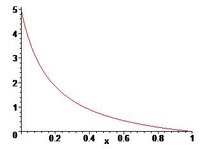Hi,
This is part of a project I am currently working on. I want to build two functions of one indpenendent variable x between 0-1, and the dependent variable y between 0-5. In the first function y and x have a positive relation. In the second function, y has a negative relation with x.
Any suggestion?
Best Regards
This is part of a project I am currently working on. I want to build two functions of one indpenendent variable x between 0-1, and the dependent variable y between 0-5. In the first function y and x have a positive relation. In the second function, y has a negative relation with x.
Any suggestion?
Best Regards

